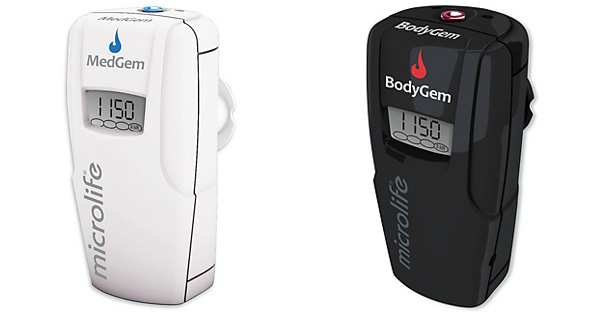This Microlife BodyGem and MedGem post reviews a research article from the Global Journal of Obesity, Diabetes and Metabolic Syndrome, called Comparison of Resting Metabolic Rates: Calculated using predictive equation and measured using a Portable Indirect Calorimeter.
Abstract
Objective: The aim of this research was to examine differences between measured RMR from a portable indirect calorimetry device and calculated RMR from the predictive equation.
Methods: Seventy-nine participants were recruited for the study. RMR measures with the portable IC device were compared with RMR values calculated using Mifflin-St. Jeor Equation (MSJE). Subjects were divided base on body fat %: Group A included 35 lean/normal participants; Group B included 44 overweight participants.
Results: Group A (r2 =0.947): The mean RMR by IC was 49 kcal/day higher than MSJE (p=0.44). Considering a cut-off difference (calculated RMR-measured RMR) of ±200kcal/day, the RMR by IC was lower than MSJE for 28% of subjects and higher for 43%. Differences ranged from -890 to +670 kcal/day.
Group B (r2 =0.943): The mean RMR by IC was 147 kcal/day lower than MSJE (p=0.02). Considering a cutoff difference of ±200kcal/day, RMR by IC was lower than MSJE for 39% of subjects and higher for 20.5%. Differences ranged from -660 to +950 kcal/day.
Conclusion: The analyses indicated no significant differences between the calculated and measured RMR for the groups. However, the individual RMR results support the use of the mobile IC to provide more accurate and personalized measurements of RMR.
Introduction
Resting metabolic rate (RMR) refers to the sum energy needed for all chemical reactions or processes that occur within a living organism in order to maintain basic life. It assesses an individual’s daily energy expenditure at rest, and provides useful information for patients with a variety of health concern.
Methods to measure RMR have been reported in the past decades. Lavoisier and Paulze first brought up direct calorimetry (measurement of heat production) for measuring metabolic rates. Later on, the indirect calorimetry (IC) method was developed to measure RMR by using O2 consumption rate and CO2 production rate.
Currently, there are many IC instruments used primarily in hospitals for diagnostic purposes. However, these IC instruments are usually bulky (not portable outside of the hospital) and expensive, and their operation requires professionally trained staff. Newer handheld portable IC devices provide convenience, ease of use, and affordability for measuring RMR in the outpatient setting.
Because of the limitations of the traditional IC equipment described above, predictive equations for RMR have been developed. These equations typically use physical parameters such as age, height, weight and gender to predict the RMR value. Among those equations, Mifflin-St Jeor Equation (MSJE) is one of the most widely recommended and used. This equation was developed from IC measurements with traditional equipment on a large sample of healthy normal weight and overweight subjects.
However, due to the wide variability between individuals in factors affecting RMR (such as body composition), RMR will vary even for subjects with the same physical parameters. In this study, RMR obtained from measurement by a portable IC instrument is compared with RMR calculated with the MSJE predictive equation. The aim of this study is to evaluate the agreement between these two methods and assess the difference.
Conclusion
In conclusion, this study compared the RMR results from a portable indirect calorimeter with the RMR predicted using the Mifflin-St Jeor Equation for normal weight and OW/Obesity males and females.
As MSJE was established from indirect calorimetry measurements using reference metabolic carts in a large population of subjects, the non-significant difference found between MSJE averages and the average measurements from the mobile IC indicate the validity of the mobile IC device.
Given the easier method to assess RMR with mobile IC devices, and the observed individual differences between measured RMR and estimated RMR values, the use of the measurement should be practiced for clinical use.
Click here to view the full publication.
The Microlife BodyGem and MedGem indirect calorimetry devices measure your clients Resting Metabolic Rate, to optimize their weight loss results.

The BodyGem and MedGem are the same type indirect calorimeter. They have the same functionality, accuracy and reliability.
The difference is that the MedGem has gone through the FDA-approval process, to allow licensed clinicians to make insurance claims on their measurements.
Get more information on the BodyGem and MedGem indirect calorimeters
We don’t post prices online, as it’s best to talk with us regarding our different system kits, to determine which one fits your unique needs.
Call me directly at 720-431-1461 or send me an email to get your questions answered.
I wish you the best of health!
David Wilcoxson